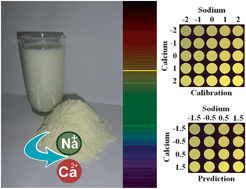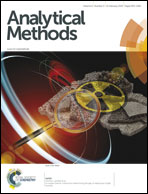Determination of sodium and calcium in powder milk using digital image-based flame emission spectrometry
Abstract
This paper proposes combining Multiple Linear Regression (MLR) and Digital Image-Based Flame Emission Spectrometry (DIB-FES) to overcome the inherent spectral interference in Flame Emission Spectrometry (FES) when sodium and calcium are present in the same sample. Metals in the air–butane flame emit radiation which is revealed in the digital images captured by a webcam (detector), on the basis of the Red-Green-Blue (RGB) color system. MLR calibration models for sodium and calcium were both developed and validated. In order to illustrate the feasibility of this proposal, the validated models were applied for the determination of sodium and calcium in powder milk. The results were compared with those obtained using Flame Atomic Absorption Spectrometry (FAAS) as the reference method. No statistically significant difference was observed between the results for both metals by using the paired t-test at a 95% confidence level. The accuracy of the models was also attested to by their recovery factors which fell between 97 and 103% for both metals. The results confirm the models' discriminating power in isolating each analyte's information from a single digital image, even with spectral interference.


 Please wait while we load your content...
Please wait while we load your content...